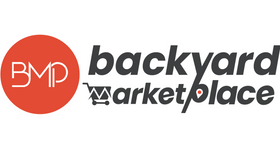
Planning an event is fun and exciting, but it can also be stressful. With so much to accomplish, your priorities can be easily lost. To ensure a smooth-running event and sheer bliss before, during, and after the party, you should begin the process as early as possible. There is a lot of information online, but it isn't easy to find.
When planning your next event, whether it is large or small, personal or professional, remember the five P's of an event planning guide: Proper Planning Prevents Poor Performance.
Planning your next event doesn't have to be a headache. Instead, make it an occasion to remember by taking the time to consider all of the details carefully. The key is to take things one step at a time. Here you will find tips and inspiration on everything from where to start to what fun activities are available.
LIST DOWN GOALS
It would be best if you spent time describing the intent and justification for organizing this event before jumping straight into the logistics, such as the location or speakers. Determine what you want to make out of the event, your ultimate objective.
If you are a business preparing an event for a company, you may want to create an event to boost sales figures. You might also be launching a revolutionary product, therefore starting a huge program to hype its release to the market. If there are multiple objectives for your event, make sure to list them all down to help you remember what to do and how the program will achieve your goals.
In event planning, you should not only plan before the actual event. The planning is an ongoing strategy before, during, and after a program. You can establish a tentative scope of the event once you have your goals and objectives in place. Your range should include essential information and indicate how you intend to achieve your objectives. Even if it is not permanent, you can make a list of preliminary event information.

Figuring out when to hold the event is essential. If you are planning to have a small party with only close friends, perhaps set the schedule in a week. Are you planning to have a massive corporate event or a backyard block party? Have it in the next quarter. It is important to visualize a timeframe for the planning and the actual event.
It is also paramount that this event planning guide includes the estimated number of attendees. Taking the example earlier, a small party with close friends could be between 10 to 30 people. A company event does not only involve employees but also shareholders, spectators, and sponsors. This could reach hundreds or even thousands of people. As the event planner, you should consider viewing the event from the perspective of your attendees to anticipate their needs correctly.
ESTIMATE THE BUDGET
Making a budget is an essential first step in event planning because it clarifies some areas of the strategy. Establishing a budget often helps prevent unpleasant surprises, such as not having enough of it for emergency situations. You will be more competitive if you plan out the whole budget ahead of time, change it when variables are finalized and stick close to the operation. To get a sense of how your spending will be distributed through your priorities, start mapping out your line-item expenses. If you have kids coming along to the event, perhaps a bounce house would be viable if it fits the budget.
You will need to update the budget as the strategy takes shape. It is ideal to take notes to maintain a detailed budget that incorporates any adjustments or revisions. While you should not go over your budget as much as possible, it's normal for planners to make changes to keep you on track.
DELEGATE THE TASKS

The number of people planning events depends on its scale. For minor events, it can usually be handled by five people or even a single person. Proper organization is needed for planning massive gatherings such as product launches and company ceremonies.
If you're starting from scratch, it's crucial to assign positions right away to ensure transparency. Everyone on the team should report to a project manager who is aware of all of the moving parts.
The Project Manager is in charge of overseeing all of the moving parts listed below and is mainly responsible for the event's implementation. They are in control of the budget, determines the course of action, and makes purchasing choices at the highest level.
The public relations team is the appropriate group in spreading awareness of the event, developing deals and scheduling plans to increase registration, managing branding, and communicating with registrants. They are also in charge of coordinating social network amplification, media relations, and other related paraphernalia. They must also ensure that attendees have everything to seize the fruits of the program, including charts, schedules, speaker details, and networking with other people.
People working on event sponsorships are responsible for laying out booth spaces, selling sponsorship opportunities, maintaining sponsorship partnerships, and exploring potential relationships with various communities and organizations. They must be capable of having impeccable timing and excellent interpersonal skills.
When on-site, the location manager is the key point of contact for the venue, retailers, and onsite volunteers for food, drinks, media coverage, and other logistical matters. It is ideal that the person in charge of this division knows a lot of people close to the event planning industry and know-how to contact them as soon as possible.
Check-in crew are in charge of setting up registration, working with tech support for those who use online tickets, producing and managing name tags, generating documentation, and ensuring that the registration process, that happens before, during and after the program, runs smoothly.
INVITING YOUR POTENTIAL ATTENDEES

Any good event has a publicity and advertising strategy in place to get the message out and build anticipation. There are a variety of ways to promote the case, from social media and blogging to internet ads and even advertisements, but whichever method you choose, each technique should be a strategic part of your overall marketing strategy.
You must first consider the target group before choosing which strategies to employ. Is your gathering aimed at young professionals? You may use online advertising as a strategy.
Setting marketing-specific priorities and targets is important when designing an event planning guide strategy. Setting ideal yet realistic campaign targets is a good idea to guarantee that your actions will produce a feasible outcome.
Your methods are the strategies you'll use to accomplish your objectives. This covers everything you'll use for promotions, such as online ads, video marketing, email marketing, social media, traditional media and public relations, among other things.
PREPARATION FOR FUTURE IMPROVEMENT
As an event planner, you must use the data from past and current events to improve future planning for other programs. It would help if you started thinking about how you'll assess the case even before it happens. Listing the priorities and targets you described in the initial planning stage is an excellent way to start.
Some factors to consider are how many people attended the event, what your expenditures are to get those people to attend, how many people are most likely to participate in more of your future events. Taking note of quantitative data will help you strategically analyze numbers and figures in the future.
You should measure the quality of the case not only quantitatively, but also qualitatively. Aside from the numbers, input from the attendees is another way to gauge performance. You can learn about how participants felt about the event by doing polls, and it can help you recognize the event's high and weak points.

In the digital age, you should also monitor how your attendees perceived the event on social media platforms. Take note of any comments of appreciation and issues. Trends and pronouncements should be observed before, during, and after the event.
CONCLUSION
Each of these components works together to create the event master plan. Work on both of these to develop a solid, actionable event plan. When it comes to organizing a case, you can get started as soon as possible. With so many moving parts, taking one step ahead on things ensures a seamless finish.
The Backyard Play Store is an online retail store operated by a veteran family that offers high-quality outdoor playsets to families around the country. Your event's aesthetics and functionality would also benefit from Concession props and equipment.
The Backyard Play Store is a company based in Silver Spring, Maryland, that was formed in 2019. What started off as a simple search for the right play equipment for our family has evolved into a passion for assisting families in locating the best outdoor playset for their backyards in order to have good, safe fun!
That is why they are committed to offering the finest outdoor play facilities at the most affordable prices. They will provide you with all of the necessary details and resources to make your shopping experience easy, fun, and smooth. Their services will surely increase the social and overall value of an event.

